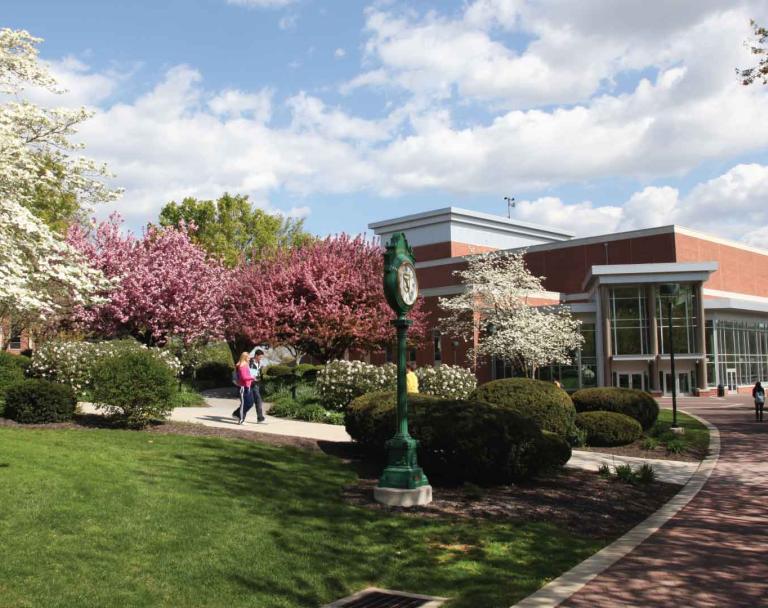Kylie Good and Luke Kessler

- Academics
- Graham School of Business
- Spotlights
- Kylie Good and Luke Kessler
How distribution of the COVID-19 vaccine shows that supply chain operations matter
People have experienced, first-hand, the effects of broken supply chains. So have businesses, and they must prioritize the need for supply chains to stay competitive and overcome disruptions.
Until recently, talk of supply chain management was limited mostly to college business courses and a few forward-looking company managers. Then, COVID-19 came along, and the term, “Supply Chain Management” became a part of everybody’s vocabulary. Mainstream media began talking about the supply chain issues and challenges related to COVID-19 vaccine distribution. Now, everyone from Wall Street to Main Street, was discussing the role of effective supply chain management and lessons learned from this experience.
Understanding a Complex Operation
For supply chains to work efficiently, there must be an accurate, timely, and consistent flow of information, materials, and finances across everyone in the network. According to York College of Pennsylvania, Associate Professor and Department Chair of Operations and Information Technology Mohammed Raja, the coordination between manufacturers, transporters, governments, hospitals, medical services, health insurance firms, pharmacies, and others involved in the COVID-19 vaccine distribution, was less than perfect.
Given the complexity of the COVID-19 vaccine supply chain, Raja believes that many organizations were initially flying blind because they were not receiving accurate, timely, and consistent information. They needed to act quickly, yet they were left to make important decisions without fully knowing the existing situation and how their actions would affect others. For example, how is supply matching demand by state and by risk group? Who has extra vaccines and who needs more? How are individuals being informed about vaccine requirements and appointments?
COVID-19 vaccine production was only the first step in a lengthy process to get an injection into someone’s arm. Distribution companies, such as DHL, FedEx, and others, needed special containers and packaging. Vaccination centers required safe handling, storage, and disposal of used items capabilities. The pandemic had already strained businesses’ ability to acquire goods, so poor material flow added gaps and bottlenecks in the vaccine distribution plan. Medical parts, such as syringes and needles, as well as boxes, delivery trucks, and tracking devices are some of the materials requiring coordination. According to Raja, this missing “infrastructure” caused many of the early failures in the COVID-19 vaccine distribution effort.
Information Sharing is Key
The passing of information and materials requires payments between organizations within the supply chain. Although COVID-19 vaccine distribution costs were financed through the government, a slew of questions from healthcare facilities and individuals lacked clear answers. For example, are there limits on vaccine prices? Does a pharmacy get reimbursed for vaccinating an uninsured person? Who hires and pays staff at mass vaccination sites? How do hospitals accommodate for vaccine administration expenses? Will nursing homes receive government funding to help with extra expenses? According to Raja, this lack of financial clarity also caused some initial delays in the rollout.
As of March 22, after about four months of getting a temporary FDA approval for the COVID-19 vaccine, about 13% of the United States population (42 million) is fully vaccinated. Moving forward, with accurate, timely, and consistent Communication, Collaboration, and Coordination across the supply chain network, almost two million individuals are vaccinated per day. At this rate, it will take us about four to five months to fully vaccinate every individual in the United States of America who wants to be vaccinated.
While some may only remember the shortcomings of the supply chains during this COVID-19 vaccine distribution, Raja truly believes that what we saw unfold during these past few months has elevated the importance of and established the impact of effective supply chain management practices. According to him, the key lesson learned from this experience is: Follow the 3C’s approach—Communicate, Collaborate, and Coordinate.
A Learning Experience
Most of the time, when Kylie Good ’22 told someone she was majoring in Supply Chain Operations Management, she’d get a questionable look, and she’d have to explain what that meant. “That changed a bit with the pandemic,” she says. “People can relate to it now. They see how important it can be.”
It's something that goes beyond coursework, she says. “We’re learning from it because we’re living it. We’ve learned from a lot of alumni that COVID-19 is impacting their work. It’s one of the biggest disruptors of supply chain operations…We may not see something like this in our lifetime again, but it’s a learning opportunity to help future generations who may come up against something like this,” she says.
This summer, Good will be interning with DHL, where she will be working on real-world projects to improve their distribution capabilities. She is also considering an independent study to learn more about our COVID-19 vaccine distribution and highlight the lessons learned through this experience.
Luke Kessler ’21 works at a grocery store while he pursues his Supply Chain Operations Management degree. He’s seen the importance of vaccine distribution as workers on the frontline get priority. “I’ve learned a lot about how we have to expect things not to go according to plan, and how do we pivot during those times,” Kessler says. “COVID-19 has been a great example of that.”
As he gets ready to graduate and start his career, Kessler believes there are deeper conversations to be had on how supply chain operators can learn from COVID-19. “It touched so many things, and we’ve barely had a chance to wrap our minds around what that means,” he says. “I look forward to seeing the studies in five or 10 years and learning what we can from it.”

